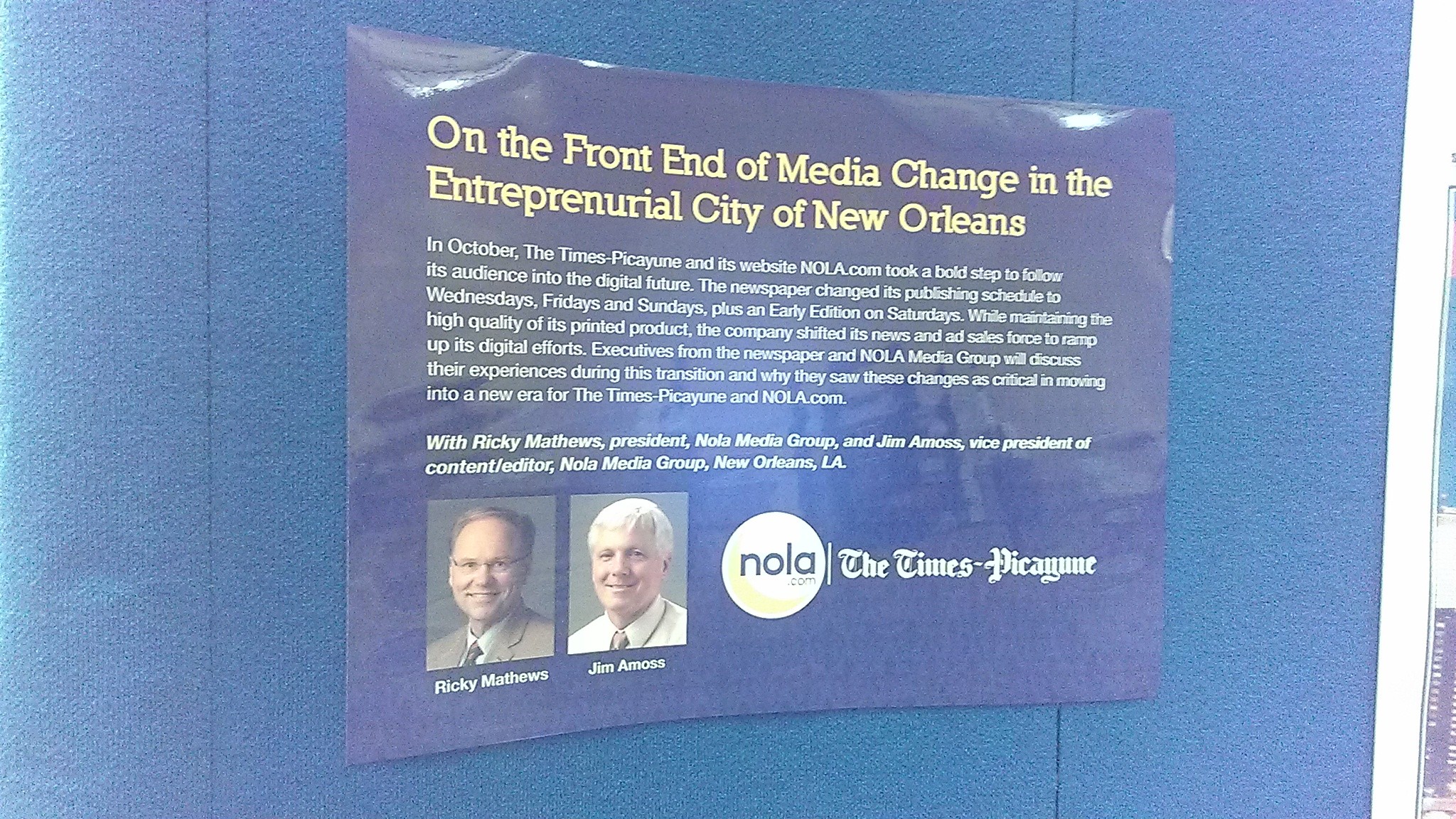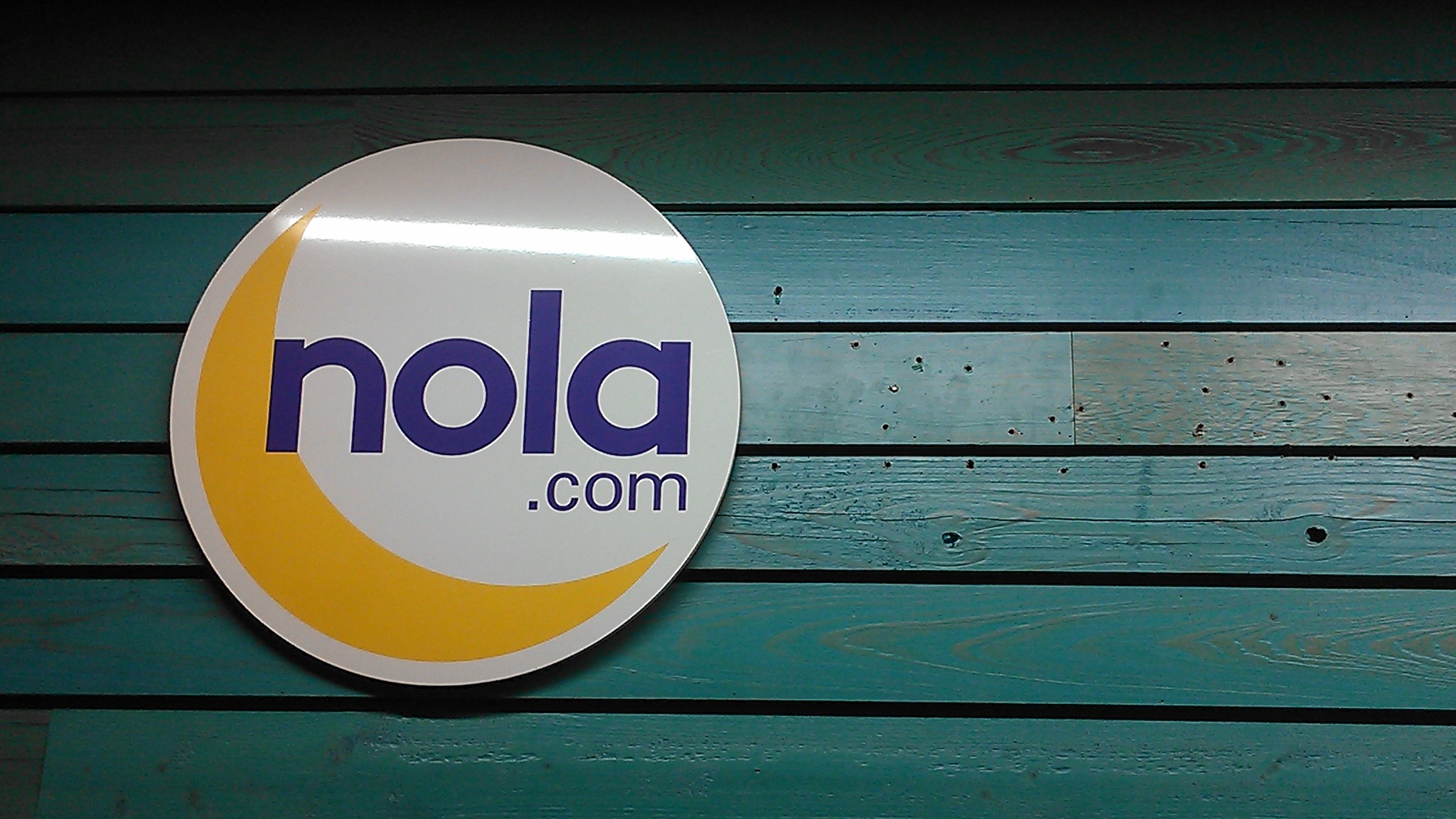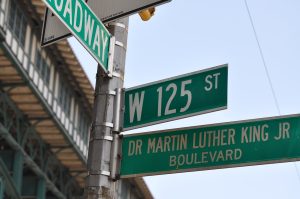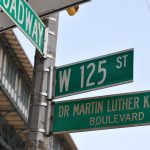Carlie Kollath Wells, a New Orleans-based freelance reporter, is attending the Key Executives Mega-Conference this week in New Orleans. She will be sharing what she’s hearing from news executives. Follow the conference attendees on Twitter at #2013megaconf.
The new Times-Picayune newsroom is meant to encourage brainstorming and collaboration, the publisher said at a conference Tuesday.
The reporters and the rest of the news gathering staff moved into the downtown New Orleans newsroom in January, according to Ricky Mathews, who is publisher of The Times-Picayune and president of NOLA Media Group, which employs the reporters for NOLA.com.
“We felt like the physical move was extremely important,” Mathews said. “We wanted to change a culture and move away from the print-centric culture.”
His update came during the Key Executives Mega Conference, being held in The Roosevelt Hotel in New Orleans. The Inland Press Association, the Local Media Association and the Southern Newspaper Publishers Association joined forces to put on the conference, which attracted more than 500 publishers, editors, sales directors and other media representatives.
The new NOLA.com office takes up two of the top floors of One Canal Place, a prominent building downtown.
The move comes after the paper in October switched to a new printing schedule and changed its company mission. Instead of printing seven days a week, the paper now prints three days a week. And, the NOLA Media Group now is focused on “digital first.
The architect described the spaces as fluid, bright and open. It’s a space, Mathews said quoting the architect, that’s prepared for brainstorming, creativity, spontaneous thinking and sharing of ideas.
The newsroom is in an open section and is bathed in natural light from the glass walls that overlook all of downtown New Orleans. The “money shot,” Mathews said, is the corner of the office that overlooks the Crescent bend in the river, which is how New Orleans got its nickname as the Crescent City.
“We gave the best views to our employees,” Mathews said. “No one has a big office. We all have functional offices.”
The newsrooms features “hotel seating,” which means reporters don’t have assigned desks.
“They’ve been equipped pretty substantially to work outside the office,” Mathews said.
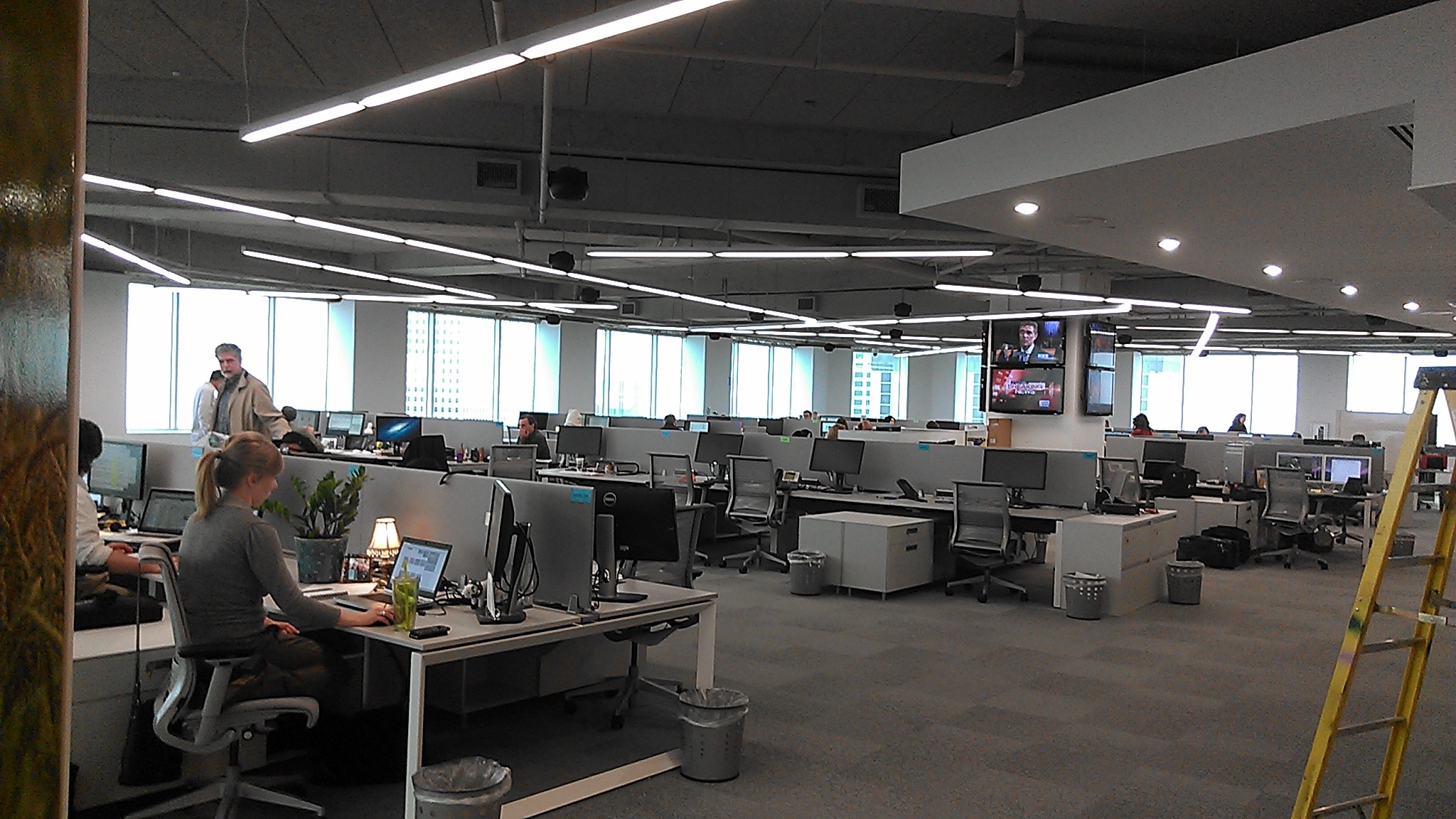
Every reporter has a MacBook and an iPhone, he said.
“Most of that area is hotel seating,” Mathews said. “Not all the reporters are in the office every day. … We don’t have a seat for everybody. It helps control clutter. We worked hard to make it feel clean and be as paperless as possible.”
The walls feature white boards with full audio/visual capabilities wired in. One of the photos Mathews showed at the conference depicted people gathered in front of a white board covered in hashtags.
The newsroom bumps up next to a video studio with a green screen and an anchor desk.
“We hired videographers and folks with a TV background to help us,” Mathews said.
Jim Amoss, vice president of content for NOLA Media Group, during the presentation showed a video of a reporter giving a video update that was posted on the website.
CHANGES FOR REPORTERS
Along with the new digs, the reporters have a new way of life.
“There are no deadlines in our new world,” he said. They are digital focused, focused on the now.”
The staff averaged 130 daily posts on NOLA.com in January. Before the digital-first change in October, the site averaged 87 daily posts.
“Our readers have a voracious news appetite and we have to feed it,” Amoss said. That task falls to the news gathering operation. “And let me dispel the notion that we have gutted our newsroom.”
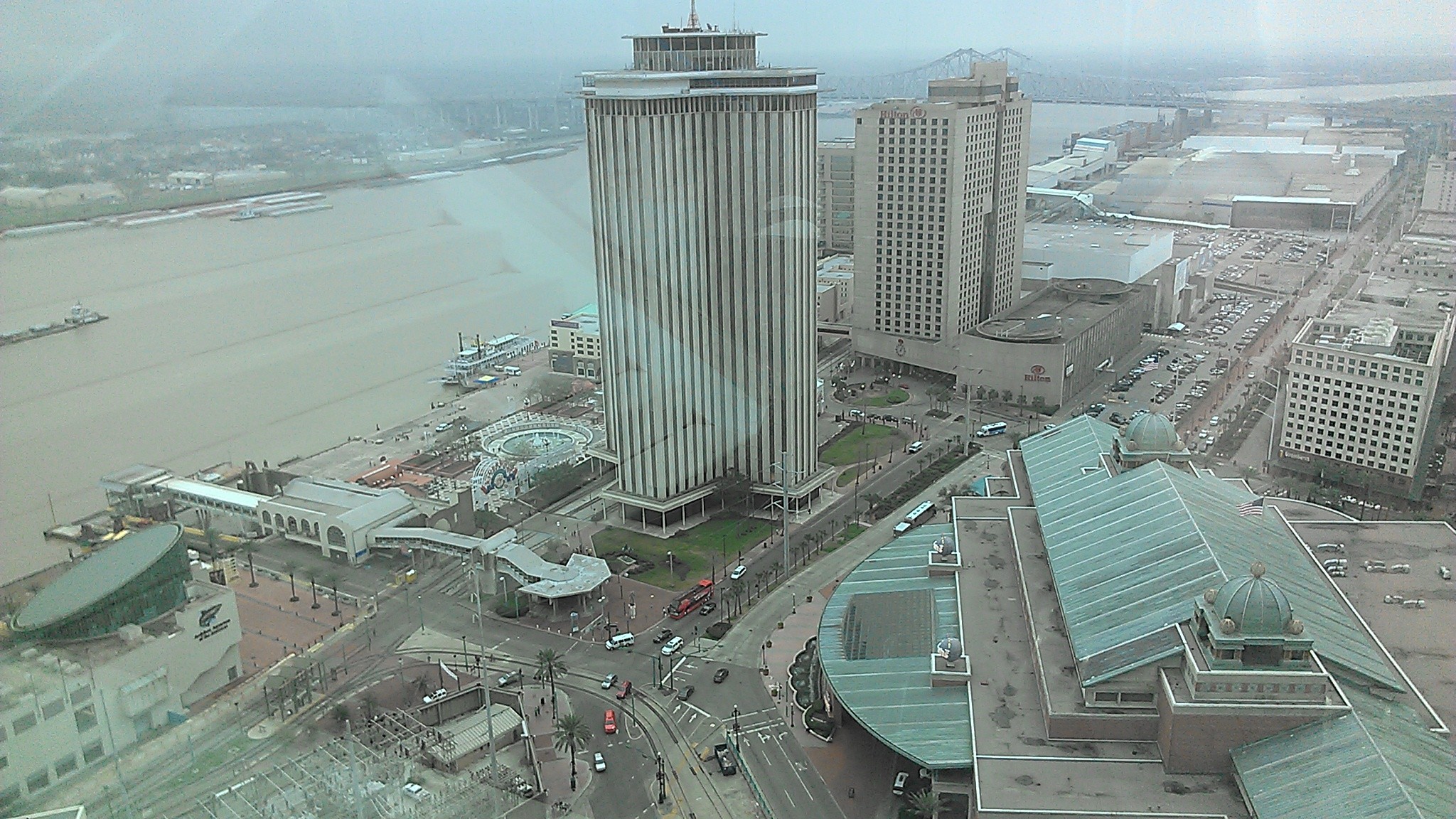
Amoss said the paper went from 181 staffers to 155. The organization, he said, also reinvigorated itself by hiring experienced journalists who were extremely well versed in the digital world.
Mathews said, “One of the fundamental changes in the newsroom is our reporters and photographers no longer live in a print world. They are competing in the digital space in ways we’ve never done before.”
Added Amoss, “Our goal as journalists is to focus on our audience, to engage with them, to respond to them. That requires a culture change on the part of everyone in the newsroom.”
The company was split to further promote the idea of “digital first.” The NOLA Media Group includes newsgathering, human resources, sales and marketing employees. These employees are based in the downtown office.
The print-oriented people are housed at The Times-Picayune’s old headquarters.
“We’re physically separated but we have a print budget,” Amoss said.
The copy editors, page designers and the other print employees take those budgets and fashion the paper out of that, Amoss said.
“The difference to the traditional way: People who are gathering the content and people who are directing the gathering aren’t thinking about the length of stories, the placement of stories, etc.,” Amoss said.
—-
Portions of this story previously appeared on Poynter.org.
